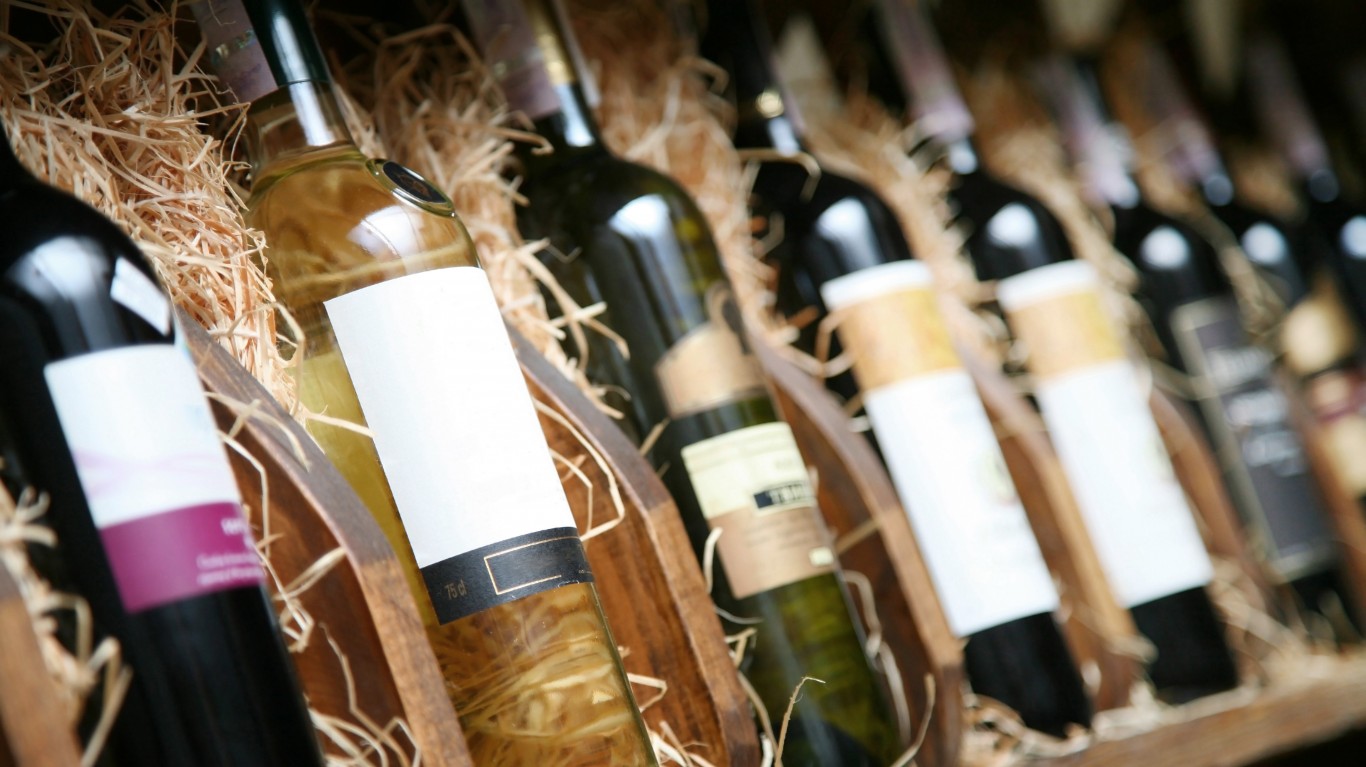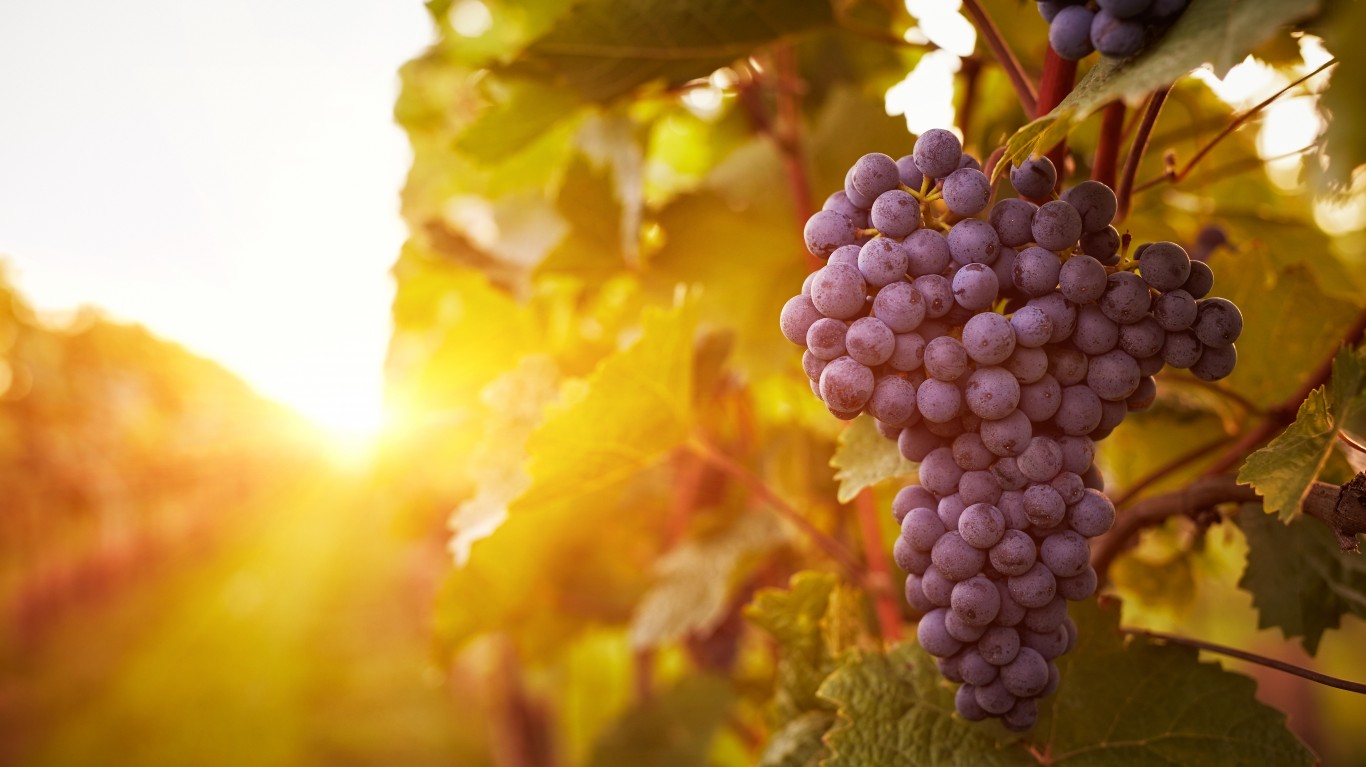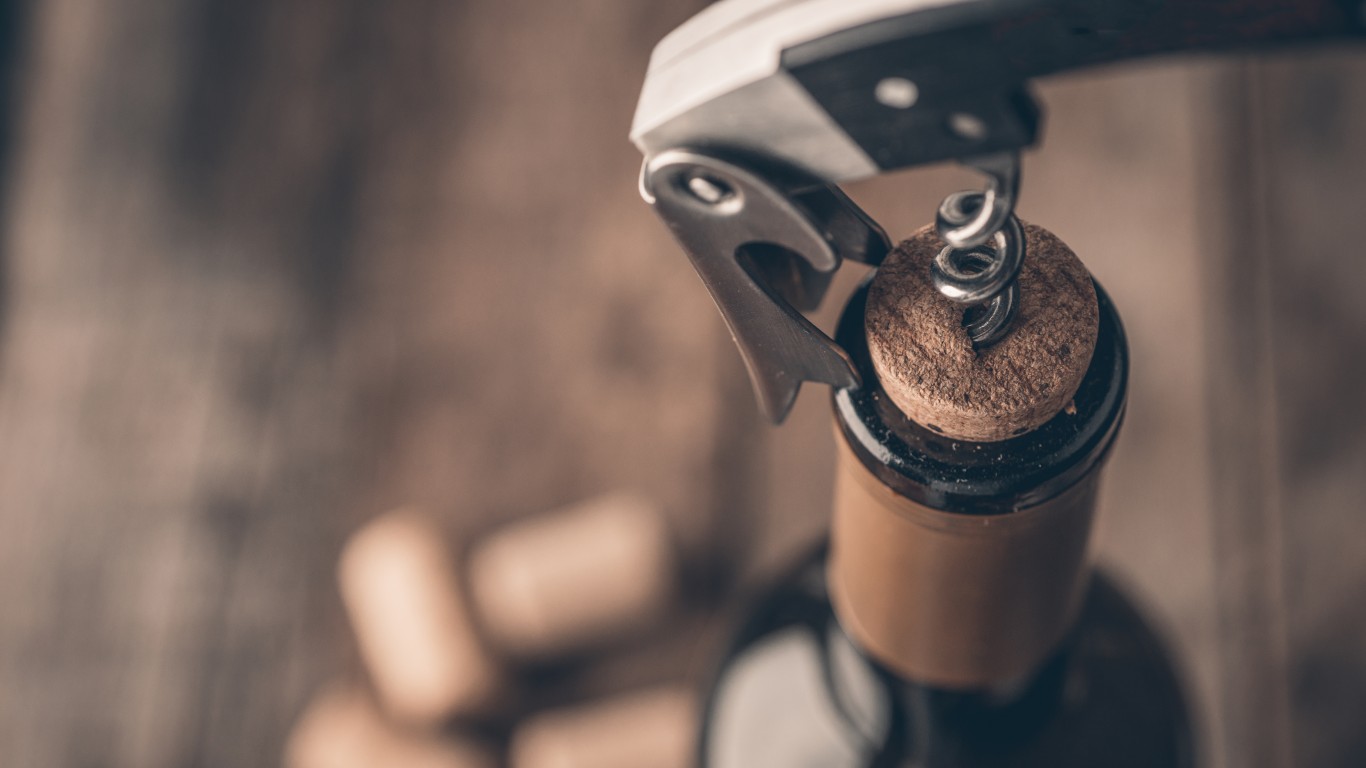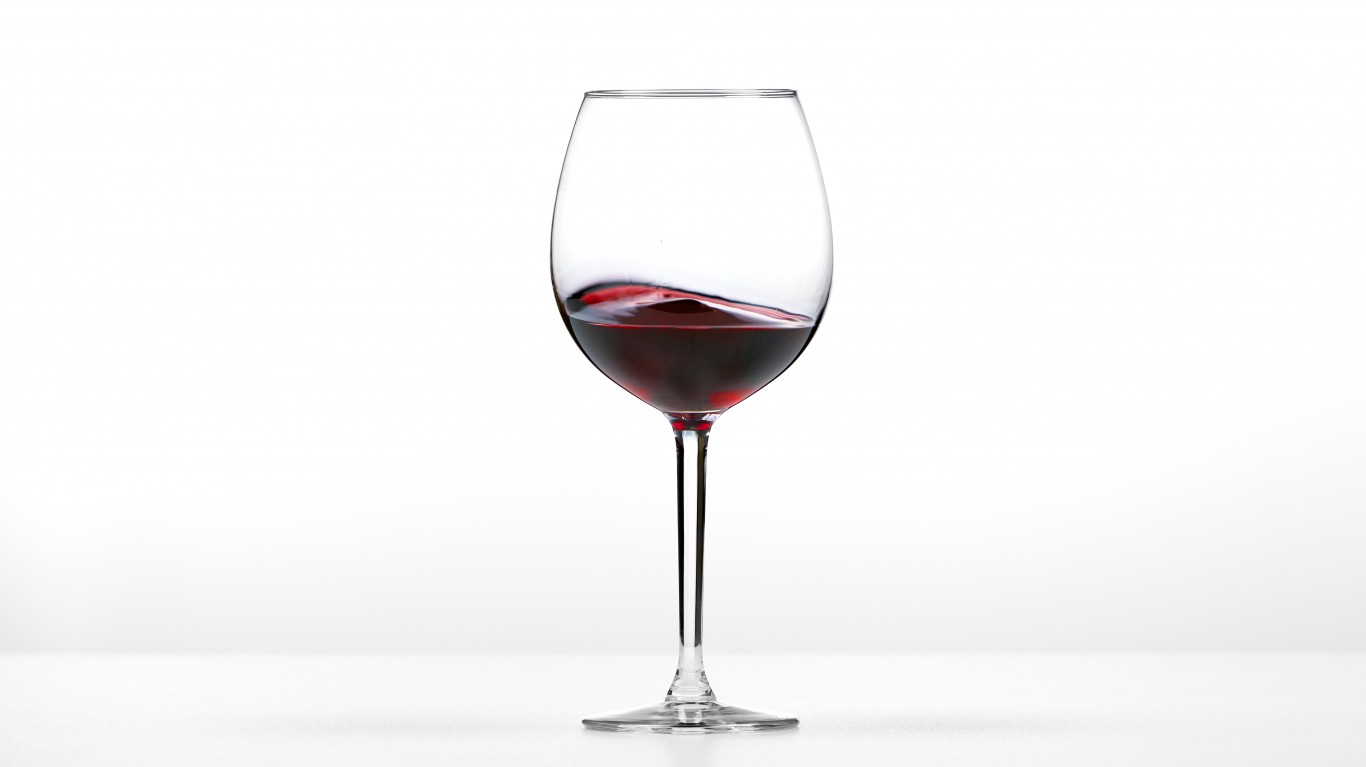Special Report
13 Ways to Tell If a Wine Is Actually Really Good

Published:
Last Updated:

The abundance of wine produced around the world today is truly overwhelming. It’s made in every U.S. state (yes, even in Alaska and Hawaii) and in more than 75 countries around the world. There are said to be more than 10,000 different wine grape varieties in existence, and that number keeps growing as hybrids are developed (some as a response to climate change) and forgotten ancient cultivars are rediscovered.
The massive wine commerce site Wine-Searcher has reported that its files contain listings for some 563,000 distinct wines from 89,000 different producers and retailers worldwide — and its catalogue is almost certainly nowhere near complete.
Even the most dedicated wine lover, then, is unlikely to encounter more than a fraction of the world’s bottlings, even in a lifetime of diverse wine drinking. How, then, can the ordinary consumer begin to know which of the many, many wines out there are actually worth buying — and which ones, once they’re bought and tasted, are really worth the money?
Click here to learn 13 ways to tell if a wine is actually really good
There’s no shortage of wine advice available, of course. Such publications as the Wine Advocate (started by Robert Parker, considered the world’s most influential wine critic), Wine Spectator, and Wine Enthusiast, as well as countless wine newsletters, blogs, and podcasts, offer recommendations and assessments. Crowd-sourced reviews on sites like Delectable and Vivino add to the mix.
These can all be useful, but ultimately all they reveal is what somebody else thought of a particular wine at a particular time — and the opinions are by no means unanimous. One critic’s ambrosial nectar might be another one’s undrinkable sludge.
Another issue is that many of the best wines are produced in small quantities and distributed irregularly around the country. The specific wines recommended by one source or another might very well be unavailable near you, unless they’re mass-produced offerings from large-scale producers. (This is the best place to buy wine in every state.)
Fortunately, there are some basic guidelines that will help anyone judge the quality of a wine without necessarily considering scores and reviews (though these can certainly add useful information).
24/7 Tempo has assembled a list of these guidelines — 13 ways to tell if a wine is actually really good, both before you open the bottle and once it’s in the glass.

1. What does the bottle look like?
Start with appearances: If a bottle has dust all around its shoulders (not just on one side), it may have been stored standing up for a long period. This might mean that the cork has dried out and let oxygen seep into the bottle, which can oxidize the wine — giving it an unpleasant odor and flavor.
Another thing to watch for is the level of the wine when the bottle is upright. The wine should rise to between a quarter and a half an inch below the bottom of the cork. If it’s lower than that, wine might have leaked out, again possibly causing the wine to oxidize. (Neither factor is a consideration, incidentally, with wines sealed with screw caps â increasingly common even for the good stuff.)
[in-text-ad]

2. Where does the wine come from?
You’d be surprised at some of the places that produce wine — sometimes very good wine — today. Experimentation is always fun, and if you have a spirit of adventure and happen to run across it on a wine list somewhere, go ahead and try that Maltese chardonnay or Thai syrah.
On the other hand, if you want to increase your chances of getting a good bottle, it’s probably safest to stick to the places best-known for high-quality wines. That would mean France, Italy, Spain, Portugal, Germany, and Austria; California, Washington, Oregon, and New York; and South Africa, Chile, Argentina, Australia, and New Zealand.

3. What grape or grapes is the wine made from?
Many wines are labeled with the principal grape variety they’re made from, though many others are not. (Wine-lovers know that red Burgundy, for instance, is made from pinot noir, but the grape name doesn’t appear on the label.)
Though a skilled winemaker can produce something worth drinking from almost any grape, relative novices might have the best luck with one of the six so-called “noble” grapes — cabernet sauvignon, pinot noir, merlot, chardonnay, sauvignon blanc, and riesling. That’s not to say that you shouldn’t consider wines made with other varietals, but be aware that some — like the intensely aromatic gewürztraminer or torrontés — have unique characteristics that may not appeal to everyone

4. How does the cork look and smell?
As noted, screw caps are becoming more and more prevalent. About two-thirds of the wines out there are still cork-finished, however. Corks that are dried out, moldy, or disintegrating might (though don’t always) suggest a problem with the wine.
In addition, an estimated 1% to 5% of cork-sealed wine bottles are “corked,” meaning that they’ve been tainted with a compound called 2,4,6-trichloroanisole — TCA for short — that gives them an unpleasant aroma often likened to wet newspaper or a moldy basement. That’s why sommeliers in fancy restaurants proffer corks to diners before pouring the wine. If the cork smells funky, the wine almost certainly will too (and it’s OK to send it back).
[in-text-ad-2]

5. How does the wine look in the glass?
Whether a wine is red, white, or rosé, it should be clear, not cloudy. (Wines described as “natural” or “biodynamic,” meaning that they’re minimally processed, are sometimes an acceptable exception.) Color is also an indication of possible problems, especially in white wines. If they’re dark yellow or brownish-yellow, they might be oxidized or maderized (maderization is a form of oxidation, usually caused by exposure to heat). A brownish rim around the edge of red wines doesn’t necessarily indicate a problem, but is a common sign of age.

6. Does it smell bad?
Cork taint and oxidation are only two elements of a wine’s aroma. One fault that can show up in what wine-tasters call the “nose” is the rotten-egg or skunky smell of sulfur compounds, either added to the wine to stabilize it or occurring naturally during fermentation. The good news is that the aroma usually dissipates 15 or 20 minutes after the bottle is opened.
Then there’s volatile acidity, a vinegary acetic acid aroma that is sometimes unintentional but sometimes introduced by the winemaker as a way of adding complexity. If indeed it is intentional, and it bothers you, the only solution is to simply avoid the wine.
[in-text-ad]

7. Does it smell good?
Sometimes a wine that doesn’t smell bad, for any reason, just doesn’t smell like much of anything at all. Wine-tasters would say that the nose is “closed in.” Most sound wines, though, have a pleasant aroma or nose. This is often just the smell of the principal grape variety used, especially in young wines. (The aroma of sauvignon blanc, for instance, is typically reminiscent of grapefruit and/or peaches; sangiovese, the main grape of Chianti, is said to smell like violets.)
Oak aging can add more complexity to the aroma, and as the wine ages and various compounds in the wine develop, fade, or knit together, it develops what is called a “bouquet.” This is when wine really starts to smell like wine and not just fermented grape juice â and also where all those sometimes silly-sounding wine-tasting analogies come in, in which bouquet is said to suggest mushrooms, shoe leather, cigar box, chocolate, etc.

8. How’s the mouthfeel?
Mouthfeel is about, well, the way the wine feels in your mouth. It’s a matter of the wine’s texture. Is it light or heavy on your tongue? Does it have a pleasing roundness of body — primarily the result of a compound called glycerol? Is it rough or smooth, puckery or bland, or something in between? Does it have the desirable quality known as a long finish — meaning that its flavor stays on the palate for 30 seconds or more?

9. How does it taste?
Speaking of flavor, how does it taste? None of those fancy wine-tasting terms or analogies to various fruits, vegetables, and what-not, are required here. Identifying and attempting to describe the various elements of a wine’s flavor can be fun, but it isn’t necessary — any more than you need to guess the recipe of a dish you like. The most useful descriptor here is just something like “Delicious!”
[in-text-ad-2]

10. Is it well balanced?
This is arguably the most important consideration of all: Are the elements that go into the character of a wine — for instance, acidity, tannins, glycerol (see above), alcohol, fruit, oak flavor, etc. — in harmony with one another? Or does one stand out? Too much tannin, for instance, gives your mouth a cottony feel (like when you bite into an unripe persimmon); too much alcohol feels “hot” and sharp.
As in so many things, equilibrium is key, and even novices will probably like a well-balanced wine better than one that’s out of whack, even if they can’t articulate exactly why.

11. How much does it cost?
When they assess a wine’s quality, professionals don’t always take this factor into consideration. “You get what you pay for” is a motto that doesn’t necessarily apply to wine. Prices depend on scarcity, prestige value, production and marketing costs, and other considerations, and often have little to do with the level of pleasure a wine will bring. A $50 wine might well be noticeably better, even to a beginner, than a $10 one — it isn’t necessarily five times better.
If prestigious labels aren’t important, it’s perfectly possible to find very nice wines for $10 to $15, and really good ones for $15 to $25. There’s nothing wrong with spending more than that if the budget permits, but spending a lot of money on a bottle that turns out to be merely OK takes a lot out of the enjoyment of the wine.
[in-text-ad]

12. Does it have a high score from the experts?
As noted above, it’s not essential to consider the scores awarded to various wines in deciding whether or not they’re good. On the other hand, all other factors being equal, if you’re trying to decide between two or more bottles of a similar type and price — and if you’ve considered the advice above — sometimes looking up scores from The Wine Advocate or Wine Spectator or the like can help. (Wine shops and restaurant wine lists often showcase these numbers, so there’s not even any looking-up to do.) Scores may not be infallible indications of quality, but a bottle ranked in the 90s or high 80s will almost certainly be worth drinking.

13. Do you like it?
This is the ultimate determinant of wine quality for each of us. Taste in wine, like taste in restaurants or movies or just about anything else, is highly subjective and can be affected not just by what’s in the bottle but by your mood, the food you’re eating, and the company you’re with, among other things. It’s quite possible, in fact, that you’ll love a wine on one occasion and find it merely blah the next time you try it.
When all is said and done, though, what really matters isn’t the way a bottle looks or the grape it’s made from or its equilibrium or even how much it costs. How can you tell if a wine is actually really good? If you like it, it is.
If you’re one of the over 4 Million Americans set to retire this year, you may want to pay attention.
Finding a financial advisor who puts your interest first can be the difference between a rich retirement and barely getting by, and today it’s easier than ever. SmartAsset’s free tool matches you with up to three fiduciary financial advisors that serve your area in minutes. Each advisor has been carefully vetted, and must act in your best interests. Start your search now.
Don’t waste another minute; get started right here and help your retirement dreams become a retirement reality.
Thank you for reading! Have some feedback for us?
Contact the 24/7 Wall St. editorial team.